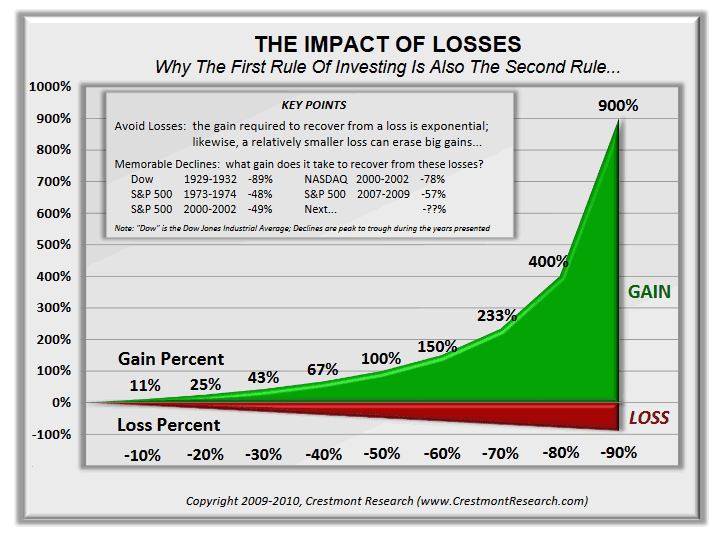How to Handle Market Risk as You Near Retirement

Balancing risk in your portfolio is a fundamental at all ages, but it’s particularly important the closer that you are to retirement. As the old saying goes, even the best-laid plans can go to waste.
Market risk and its unpredictable timing aren’t the same for everyone. Should your investment holdings take a hit in your late-career years, it could very much throw your retirement plans off-kilter.
Up until this point, you may have adopted an investment strategy that had growth and wealth accumulation as your top goals. But these priorities tend to change as you get closer to retirement.
How Do Things Change?
Once you retire, you will start living off the assets you accumulated and collecting income from your portfolio, instead of the income stream you are earning now from your career work. To that end, it pays to be mindful of your risk exposure to market losses as you get within the 10-year window of retirement (what pundits call the ‘retirement red zone’).
Why? Because your window for recovery isn’t as lengthy as it was earlier in your career. In earlier bear markets, you may have had as long as decades to wait out your losses and have your money get back to where it was. But, bit by bit, that convenience of time dwindles the closer we get to retirement.
Since you will depend on income streams that are generated by the assets in your portfolio, it’s a good time to look at how you can protect and preserve what you have earned. That is why the years just before you retire are so important.
Making Every Retirement Dollar Count
Every dollar that you lose today is a dollar of present or future retirement income that you might have otherwise enjoyed (and it might even generate more than a dollar of income, depending on how you allocated it for retirement).
It’s as Warren Buffet’s well-known rules of investing go. Rule #1 is “never lose money.” And rule #2? That is “Never forget rule #1.”
Of course you can’t avoid losses. Market cycles mean inevitable ups and downs in your portfolio. But large losses can be costly, especially in early retirement. And if you are in retirement and withdrawing money from your portfolio for income, you are just compounding the effects of those initial losses for years to come.
How Can the Timing of Market Risk Affect You?
The sequence of returns that you earn each year on your investments comes sharply into focus at this point. A large loss early on in your retirement, or just prior to your retirement, means that you might have that much less money to draw from for the rest of your life.
One researcher’s work really drives this home. Ed Easterling of Cresmont Research dove into historical market data from 1929 to 2010 for the S&P 500, the Nasdaq, and the Dow Jones.
Based on the market indexes, he isolated five noteworthy bear markets:
- The Great Depression and poor index performance for the Dow from 1929-1932
- Fallout from the oil crisis of the 1970s and poor index performance for the S&P 500, 1973-1974
- The dot-com market crash of the 2000s, and poor performance on the S&P 500, 2000-2002
- Another market index crash from the dot-com crash, on the Nasdaq, 2000-2002
- The financial crisis and Great Recession of the late 2000s, and poor performance by the S&P 500, 2007-2009
The results can be seen here:
 Source: Crestmont Research, CrestmontResearch.com, “The Impact of Losses.” All rights reserved.
Source: Crestmont Research, CrestmontResearch.com, “The Impact of Losses.” All rights reserved.
Note the losses for each bear market. These aren’t hypotheticals, but real market drops.
Easterling also points out how much it would take for your money to get back to where it was in different loss scenarios. This is where the shortcoming of arithmetic returns comes into play.
If your portfolio lost 20%, it would take a gain of 25% to get back to your starting point. For a loss of 30%, a rebound of 43% would be needed for complete recovery. And the numbers go up from there.
What Can You Do Now to Plan Ahead?
If you haven’t already, here are some steps you can start taking to switch your portfolio to a more “retirement-ready” gear:
1. Look at Your Current Picture
Evaluate the current status of your portfolio. Are you still chasing investment growth as much as you did in your early career? Or have you tapped the brakes on this in the interest of preserving and protecting your must-have assets for future income?
Everyone has a different situation, so there is no universally applicable answer. You might want to consider how much income you will need for retirement as you approach this step.
In turn, that can help you determine how much you need to save.
2. Evaluate Your Risk
Based on your findings from above, is the level of risk that you have in your portfolio appropriate? As people move closer to retirement, it’s not uncommon for their risk tolerance — or their psychological appetite for stomaching losses — to change.
There is also the issue of risk capacity. Risk capacity is someone’s practical ability to weather investment losses before the math doesn’t work for them anymore.
Does your level of risk make sense for your risk tolerance and your risk capacity? How would you recover from losses in pre-retirement or early retirement? Would you be in as strong of a financial position as before?
All of these questions are important to answer. Working with a financial professional can help you work through different scenarios and what-ifs toward a plan that makes sense for you.
3. Explore Strategies for Protection
Are there any steps you can take to start protecting more of your money for the future? With their guarantees of principal protection and lifetime income, annuities are one solid choice that you might turn to.
Three types of annuities are fixed, fixed indexed, and variable contracts, all of which have their respective advantages and disadvantages. Fixed indexed annuities are emerging as a popular option among these choices.
Why? Fixed index annuities stand out with their principal guarantees, growth potential above other fixed-interest holdings like CDs, and ability to lock in growth after every crediting period.
They have historically paid more interest than fixed annuities, and they have less risk than variable annuities. In a variable annuity your money is invested in mutual fund subaccounts that can lose their value when the markets decline.
But like their fixed indexed cousins, variable annuity contracts have guaranteed income riders that pay out a stream of income regardless of how the markets actually perform.
If you have reached retirement age, an immediate annuity may also be a good choice. This type of annuity requires a lump-sum premium upfront. Then it immediately begins paying a stream of income that you can’t outlive.
4. Plan with Your Financial Professional
Come up with a plan for the times ahead with your financial advisor. They can help balance your needs for recovery with effective goals for protection and future income.
It may not be wise to move all of your money from equities into instruments such as annuities. You may want professional help to aid you in deciding how much of your money should be in each asset class.
Diversification among stocks and stock mutual funds, bonds and bond mutual funds, and other types of vehicles such as annuities can go a long way towards protecting your money from bear markets.
Looking for Help with Your Retirement?
Of course, market risk is just one of several risks in retirement that it’s prudent to plan for. After many years of hard work, you will want your money to work hard for you. An experienced and knowledgeable financial professional can help you with reaching this in more ways than one.
They can help you foresee potential challenges and issues before they arise. With their aid, you can evaluate your current progress and see what else you might be able to do to reach your goals. What’s more, they can also assist you with these questions of balancing risk and more in your overall retirement strategy.
If you are looking for someone to assist you, many independent financial professionals are available at SafeMoney.com. They aren’t bound to just one financial company, so they have the freedom to present you with a variety of options for your situation. They are also well-versed in protection strategies using guaranteed annuity contracts and other guaranteed instruments.
Use our “Find a Financial Professional” section to connect with someone directly. You can start with an initial appointment to discuss your situation and explore a working relationship. Should you need a personal referral, call us at 877.476.9723.








